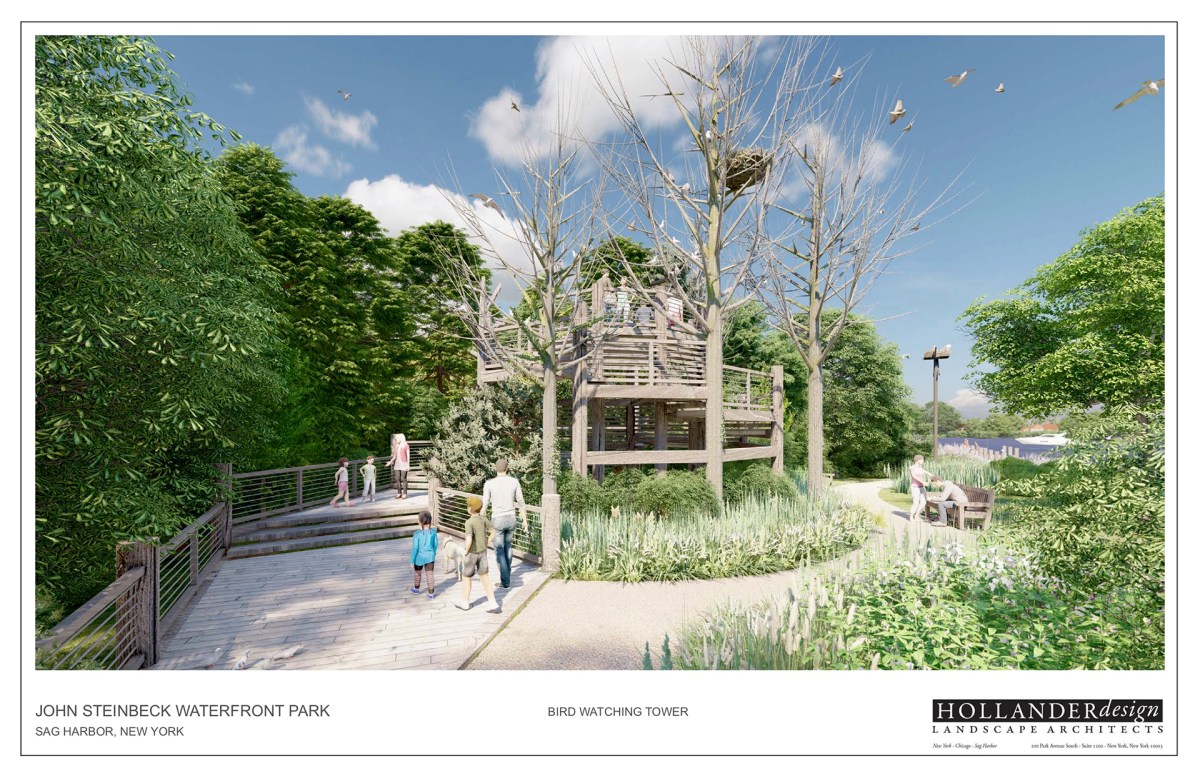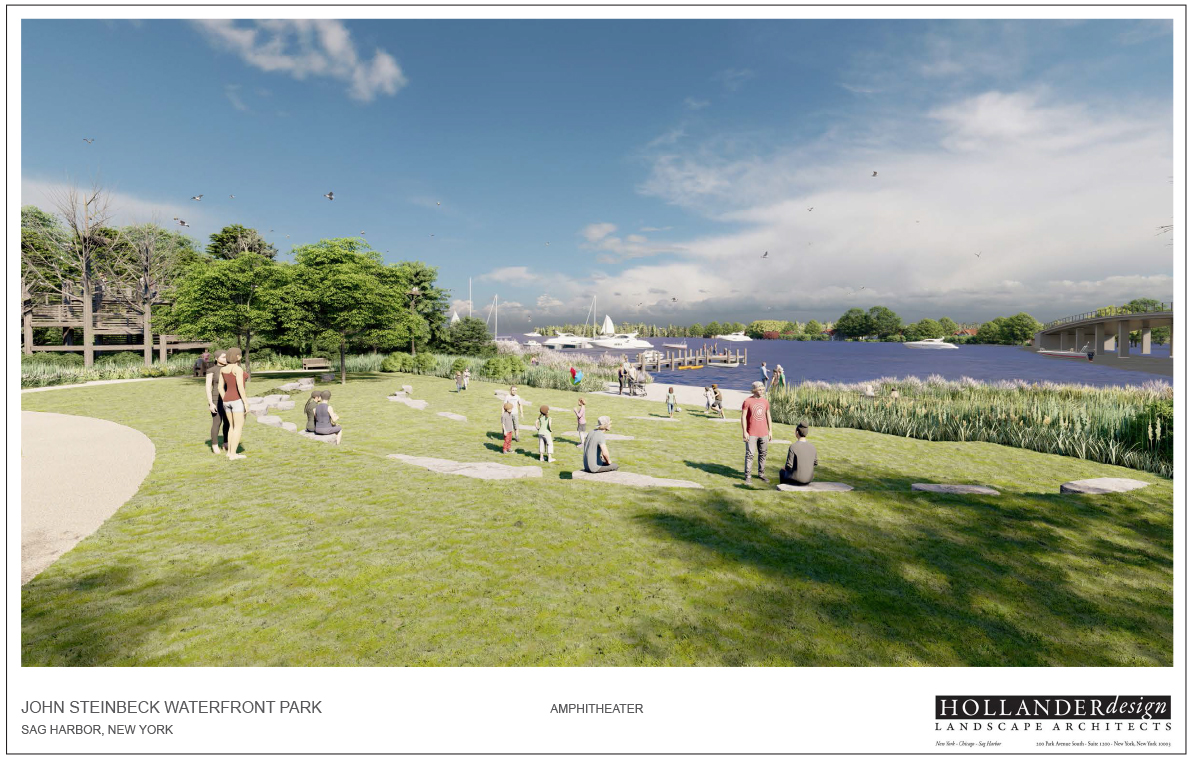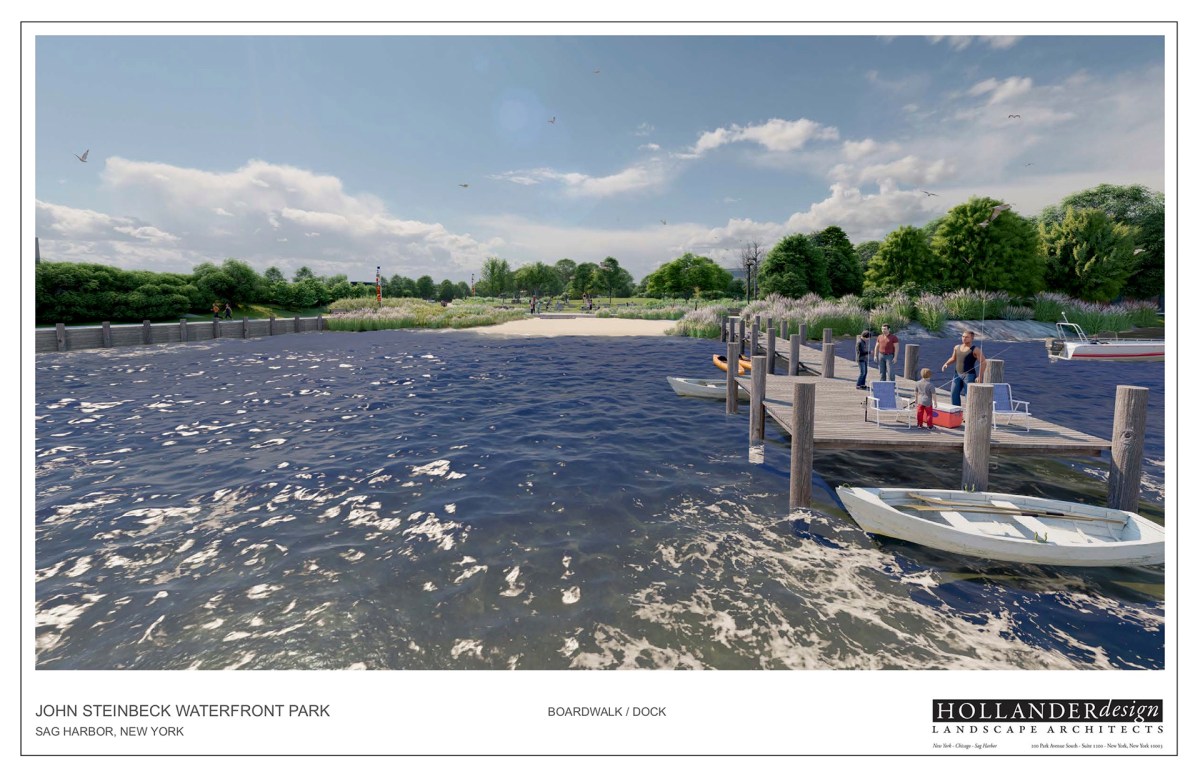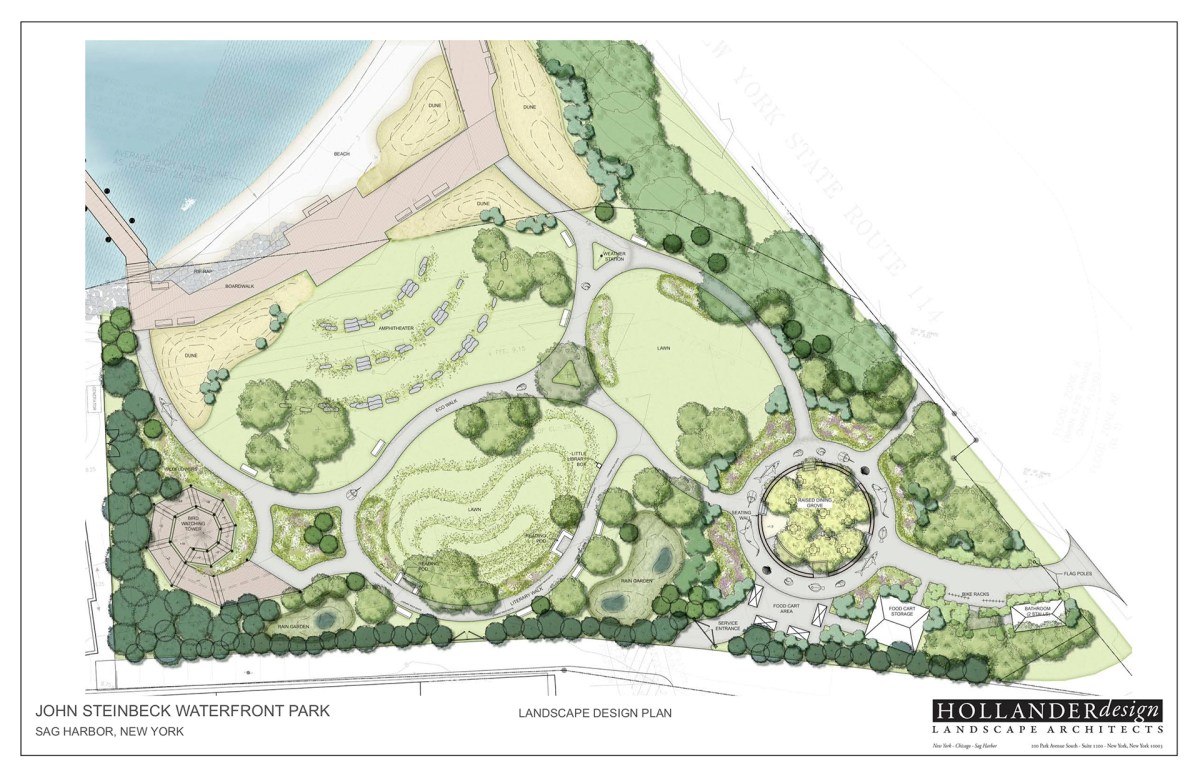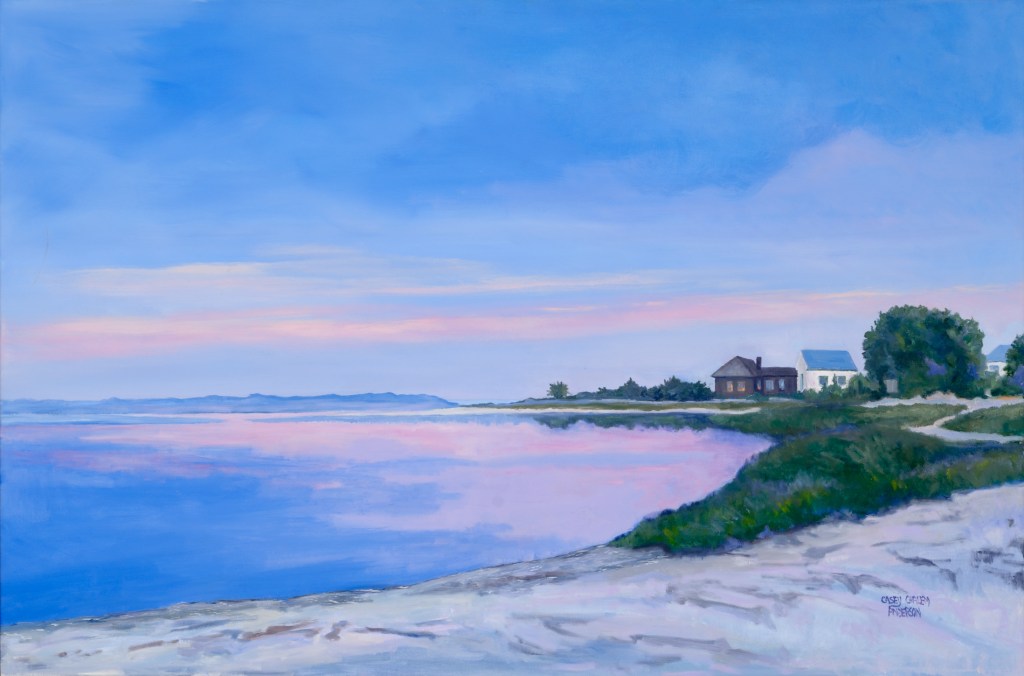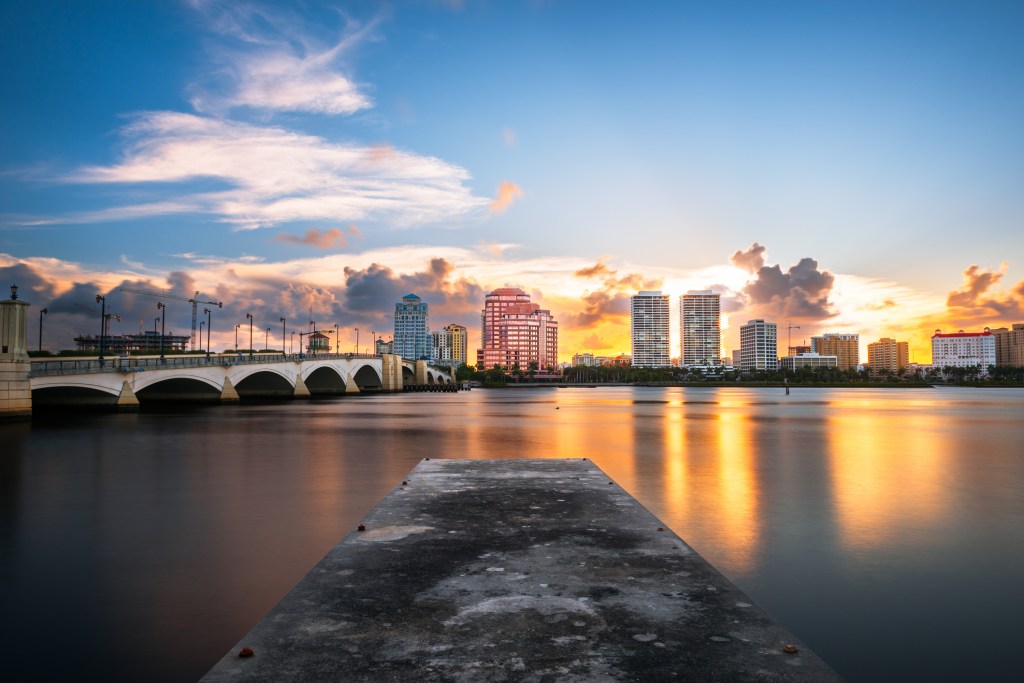Steinbeck Park Becoming A Reality

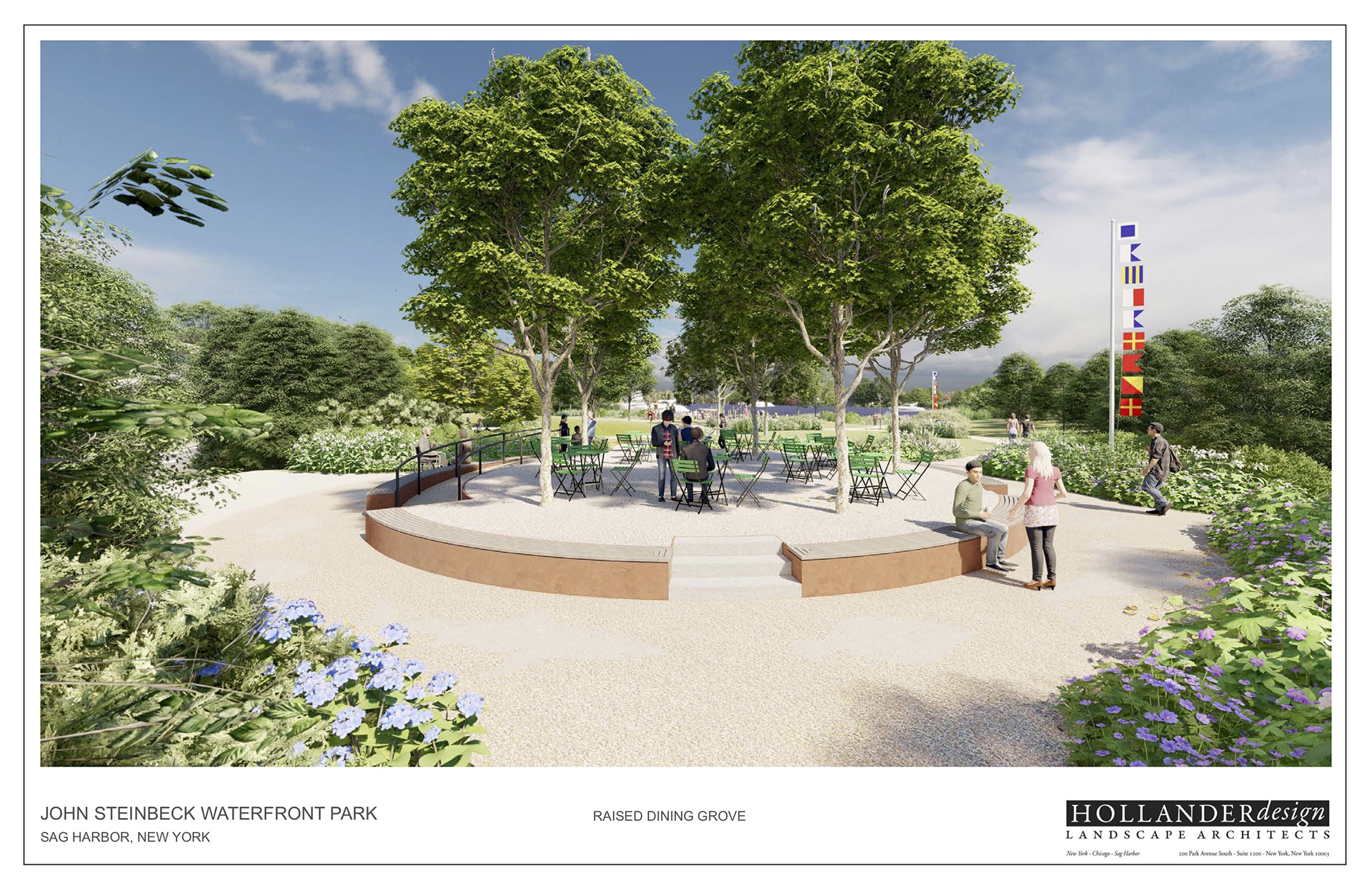
John Steinbeck Waterfront Park is finally becoming a reality.
A plan four years in the making will be made official Friday, August 16, when the Town of Southampton will transfer management and operation of the site to Sag Harbor Village after acquiring the parcel last month under the town’s Community Preservation Fund. The handover caps an effort dating back almost a generation to save one of the last remaining pieces of waterfront property from condominium development. The plan is for the new park to be linked with the existing Windmill Park and soon-to-be-updated Long Wharf Pier through a walkway under the Lance Corporal Jordan C. Haerter Veterans Memorial Bridge, forming an interconnected feature at the center of downtown.
“This is a banner day for Sag Harbor — a community which had poured millions of dollars into the Community Preservation Fund, particularly in the past few years,” village Mayor Kathleen Mulcahy said. “The new park saves an absolutely vital piece of our waterfront from development, and instead offers a lovely gateway to our village. We expect in due time this will become a beautiful amenity for residents and visitors alike.”
The recently-voted-in mayor said the move would not have been possible without the support of the town and the work of former Mayor Sandra Schroeder and Trustee Jim Larocca, who “tirelessly led this effort,” she said.
Southampton Town closed on the $10.5-million purchase of the 1.25-acre property July 24 with funding from its Community Preservation Fund, which is financed through a two-percent tax on real estate transfers.
The park is named after John Steinbeck, the author of “East of Eden,” “Of Mice and Men,” and “The Grapes of Wrath,” who won the 1962 Nobel Prize in Literature. Steinbeck, and his wife, Elaine, were village residents for the last 16 years of his life and became deeply involved in the Sag Harbor community — instrumental in the creation of the Long Wharf windmill and the fall HarborFest.
“If you pay your bills, trade locally as much as possible, mind your business, and act reasonably pleasant, pretty soon they forget that you are an outsider,” Steinbeck wrote in his 1957 essay “My War With The Ospreys.”
“I feel that I belong in Sag Harbor and I truly believe that the people of the village have accepted us as citizens,” he said.
He penned at least two of his best-selling novels — “The Winter of Our Discontent” (1961) and “Travels with Charley” (1962) — from his famed writing studio, Joyous Garde, which looked out over the Sag Harbor waters, and died in 1968. The mayor said a statue of Steinbeck was donated to be placed in the park. Elaine Steinbeck, who passed in 2003, was a patron of Sag Harbor arts, and the stage at Bay Street Theater, across from the John Steinbeck windmill, is named for her.
“Steinbeck Park will enhance the village experience for everyone and honor a great American author who cherished Sag Harbor,” said Southampton Town Supervisor Jay Schneiderman.
Informal planning and design of the park is being headed by village resident and landscape architect Edmund Hollander. With Mulcahy and others, he’s made preliminary concept plan renderings that depict an entrance to a raised area with seating and a grove of shade trees to sit under while looking out at Sag Harbor Cove.
The idea is to have three main walkways — a literary walk, historic walk, and ecological walk — each with educational and scenic value that tie into the theme of that trail. For instance, the literary walk would have places to sit and read, and a box filled with books to choose from. Schneiderman added Steinbeck quotes could even be engraved on the benches. The ecological walk would have QR codes that visitors scan with their phone that would teach them about tidal wave changes, marshes, and ospreys. In total, the current design could cost anywhere from $3 to $4 million.
“The park is beautiful. The park is recreational. The park is educational,” Hollander said. “That’s one of the concepts we’ve been playing around with there, but these plans are a design of what it could be, not what it has to be.”
Creating enough typography creates a place for park goers to experience the views while also creating ample drainage that would also help mitigate storm-water runoff. Mulcahy said the plan is for it to look as natural as possible, with the addition of native plants and rain gardens.
Sketches show the park going down to the water, with a small pier for a place to fish and launch a kayak. Schneiderman said he’d also like to see the water taxi from Sag Harbor to Greenport revived, as a way for people to explore the parks and the main streets both villages have to offer, while also curbing any potential parking problems.
“We’re all excited about that property,” Schneiderman said. “I’m thrilled. This is extraordinary, and I think there will be real support for this. This is a place I’d love to visit, bring my family to and hang out. This would be a real asset to downtown.”
The public will be involved in decision-making regarding the design of the park moving forward. In the interim, the 1.25 acres of green space with split-rail fencing, picnic tables, and benches will be open for residential use so Mulcahy can see how visitors would like to use it. There’s $130,000 in a fund that will go toward maintaining the property for the time being. The hope is to raise money through public and private donations, and use recycled materials to bring the final plan to life. The mayor said she’d like to see the village break ground on the project next summer.
desiree@indyeastend.com
